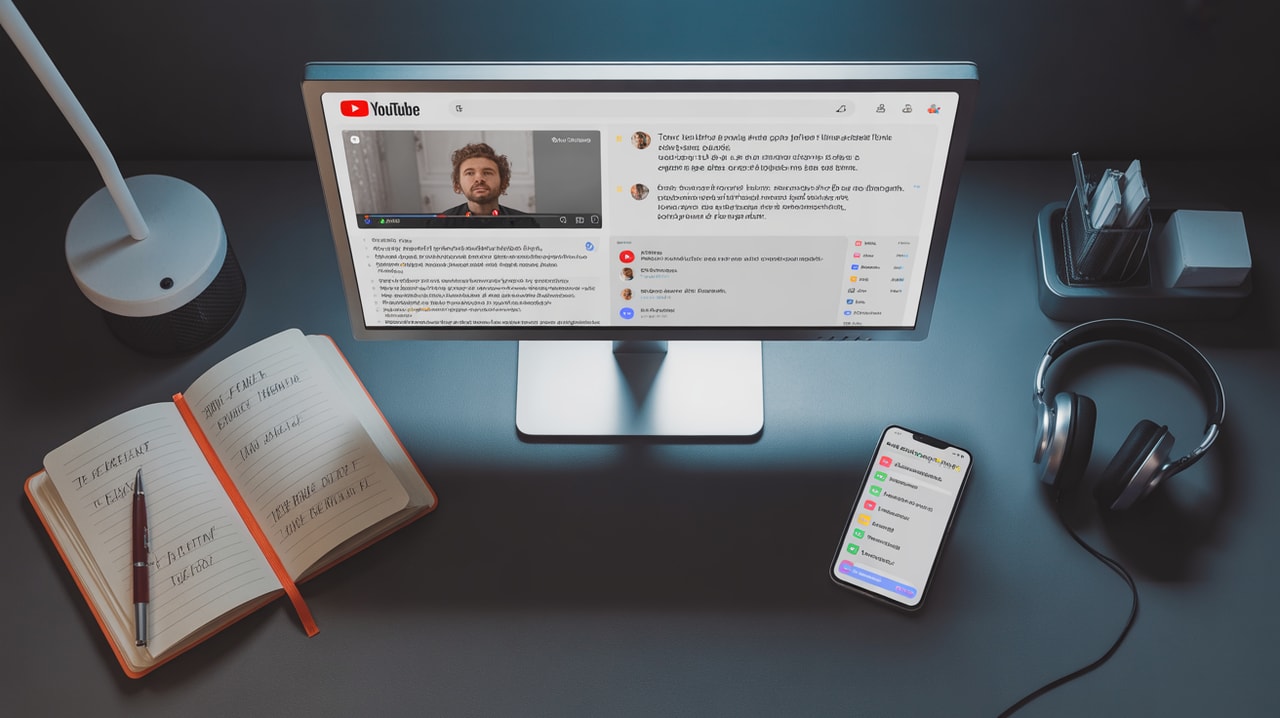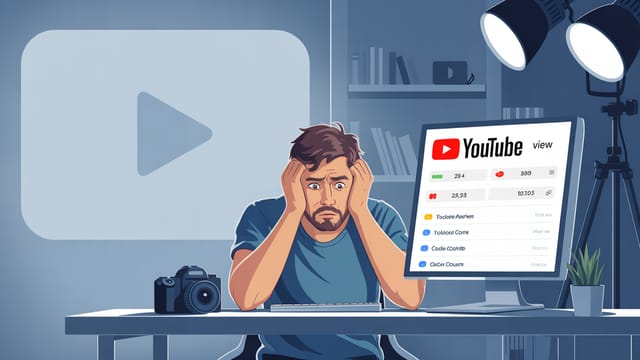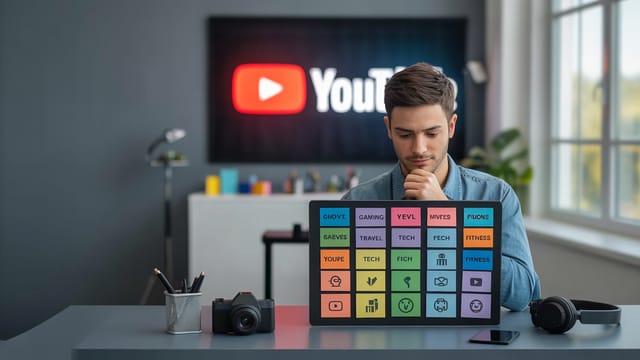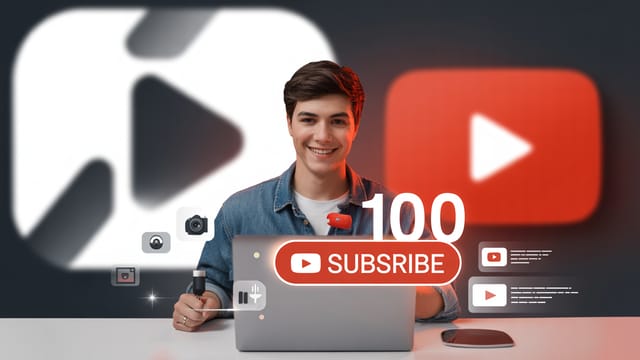
Ready to get your next 10,000 subscribers?
Join thousands of creators who use Subscribr to create faster, better YouTube videos.
AI tools are rapidly transforming how we create content, and YouTube is no exception. From generating script ideas to drafting entire video outlines, AI can be a powerful co-pilot. However, relying solely on AI without human oversight is a recipe for disaster. AI models, while sophisticated, can sometimes generate inaccurate information, lack nuance, or even perpetuate biases present in their training data.
For YouTubers, this isn't just a minor inconvenience – it can seriously damage your credibility, mislead your audience, and even impact your channel's standing. That's why understanding how to effectively fact-check and edit AI-generated content is absolutely crucial before you hit publish.
This guide will walk you through the vital steps to ensure your AI-assisted YouTube content is accurate, authentic, and aligns with your voice and values.
How Reliable is AI-Generated Information for YouTube Videos?
Let's be clear: AI is a fantastic tool for assisting with content creation, but it is not a substitute for thorough research and human expertise. The reliability of AI-generated information varies greatly depending on several factors:
- The AI Model: Different AI models have varying levels of training data and sophistication. Some might be better at generating creative text, while others might be more adept at factual retrieval. However, none are infallible.
- The Prompt: The quality of the information you get from AI heavily depends on the clarity and specificity of your input prompt. Vague prompts can lead to vague or even incorrect outputs.
- The Topic: AI is generally better at summarizing and synthesizing information that is widely available and well-established. It can struggle with niche topics, rapidly changing information (like current events or trending data), or subjective opinions.
- Recency of Data: Most large language models have a knowledge cutoff date. They cannot provide information about events or developments that occurred after they were last trained. Relying on AI for current trends or news is risky without external verification.
- Confabulation: Sometimes, AI models can "hallucinate" or make up information that sounds plausible but is completely false. They don't know they are lying; they are simply generating sequences of words based on patterns in their training data.
Why This Matters for YouTubers: Your audience trusts you to provide accurate information. Spreading misinformation, even unintentionally via AI, can erode that trust, lead to backlash in comments, and potentially violate YouTube's community guidelines, which are increasingly addressing synthetic and manipulated media. As recent YouTube policy changes highlight, creators using realistic altered or synthetic content created using AI tools are now required to disclose this to prevent misleading viewers. This underscores the platform's focus on transparency and accuracy, especially when AI could be mistaken for reality.
Therefore, you should never treat AI-generated text as gospel. It should be viewed as a starting point, a first draft, or a source of ideas that requires rigorous fact-checking and editing.
Why Fact-Checking AI Content is So Important for YouTubers
Fact-checking isn't just a good practice; it's essential for maintaining credibility and building a sustainable presence on YouTube. Here’s why it's particularly critical when using AI:
- Ensuring Quality Control and Human Oversight: AI lacks critical thinking and contextual understanding. It doesn't know if something is true or false; it predicts the most likely next word based on patterns. Human oversight is the only way to apply critical judgment, evaluate sources, and ensure the information presented is accurate and reliable. You are the final quality filter.
- Maintaining Authenticity and Personal Touch: AI-generated content can sometimes sound generic, sterile, or lack the unique voice and personality that draws viewers to your channel. Editing allows you to infuse the script with your authentic style, humor, and perspective, making the content relatable and engaging.
- Navigating Copyright Issues and Ethical Dilemmas: While AI tools are becoming more sophisticated in generating text, visuals, and even audio, the ethical and legal landscape around AI-generated content is still evolving. Issues like copyright ownership of AI-created works, using AI to mimic someone's voice or likeness, and transparency about AI usage are significant concerns. Fact-checking and editing involve verifying sources (to avoid unintentional plagiarism or misuse of information) and ensuring you are comfortable with the ethical implications of the AI's output. YouTube's evolving stance on monetizing AI-generated videos also emphasizes the need for unique and creative content that goes beyond simple automated processes.
- Avoiding Misinformation and Harm: In sensitive topics like health, finance, or news, inaccurate information can have serious consequences. Fact-checking is a moral and ethical responsibility to prevent the spread of harmful or misleading content.
- Building Authority: Consistently providing accurate, well-researched content establishes you as an authority in your niche. This builds trust with your audience and encourages repeat viewership and subscriptions. Channels that prioritize accuracy and value, like those using tools to ensure their content is well-researched and structured, tend to build stronger, more loyal communities.
What's the Best Way to Edit an AI Script for Accuracy?
Editing an AI-generated script involves more than just correcting grammar. It's a multi-layered process focused on accuracy, clarity, authenticity, and optimization for YouTube.
Here’s a step-by-step approach:
Step 1: Initial Review and Structural Assessment
Read through the entire AI-generated script without making edits. Get a feel for the flow, the main points, and the overall structure.
- Does it make sense? Are the arguments logical?
- Is it comprehensive? Does it cover the topic adequately based on your initial plan?
- Is the structure logical? Does it follow a clear introduction, body, and conclusion?
Use this initial read to identify sections that feel weak, confusing, or potentially inaccurate. Tools within platforms like Subscribr can help you structure your content logically using outline generation or by converting brainstorming chat sessions directly into structured drafts.
Step 2: Fact-Checking - The Core of Accuracy
This is the most critical step. For every factual claim, statistic, date, name, or quote in the AI-generated script, you must verify it using reliable, external sources.
- Identify all factual claims: Highlight or note down every piece of information that presents itself as a fact.
- Use reputable sources: Consult trusted websites (.gov, .edu, established news organizations), academic papers, books, and expert interviews. Avoid relying on single sources, Wikipedia (as a primary source), or forums/blogs unless they are citing their own reputable sources.
- Cross-reference information: Verify the same piece of information from multiple independent sources to ensure consistency.
- Check dates and context: Ensure information is current and presented within its proper context. AI might pull a fact that was true years ago but is no longer relevant or accurate today.
- Verify statistics: Statistics are easily misrepresented or taken out of context. Find the original source of any data and understand the methodology and limitations.
- Confirm names and titles: Double-check the spelling of names and the accuracy of titles or affiliations.
- Attribute quotes correctly: If the AI includes quotes, verify the exact wording and who said it.
Pro-Tip: Think like an investigative journalist. Assume nothing the AI provides is automatically true until you've verified it yourself.
Step 3: Refine for Clarity and Flow
AI can sometimes generate clunky sentences, repetitive phrases, or awkward transitions.
- Simplify complex language: Break down jargon or complicated ideas into easily understandable terms for your target audience (remembering this is a beginner-level guide).
- Improve sentence structure: Vary sentence length and structure to keep the viewer engaged.
- Ensure smooth transitions: Make sure ideas flow logically from one point to the next. Use transition words and phrases.
- Eliminate redundancy: AI can sometimes repeat the same idea in slightly different ways. Condense and streamline.
- Check for logical progression: Does the script build its case effectively? Does it lead the viewer clearly through the topic?
Step 4: Inject Your Voice and Personality
This is where you make the AI-generated script yours.
- Rewrite sections in your own words: Don't just tweak; sometimes, completely rewriting a paragraph is necessary to make it sound like you.
- Add personal anecdotes or examples: Share your own experiences or insights related to the topic.
- Incorporate your humor or specific mannerisms: If you have catchphrases or a particular style, weave them in.
- Adjust the tone: Ensure the tone matches your channel's brand – is it energetic, calm, serious, funny? Subscribr's Voice Profiles feature can help analyze your existing videos to capture your unique speaking style, making it easier to maintain consistency when editing AI drafts.
- Ensure authenticity: Does the script reflect your genuine perspective and passion for the topic? If it feels forced or generic, keep editing.
Step 5: Optimize for YouTube and Audience Engagement
A script for YouTube isn't just text; it's the foundation for a visual and auditory experience.
- Strengthen the hook: The opening needs to grab attention immediately. Refine the AI's hook to be as compelling as possible, clearly stating the video's value proposition. Tools specifically designed for hook creation can be helpful here.
- Add visual cues and B-roll suggestions: Think about what will be on screen as you're speaking. Add notes for B-roll, graphics, text overlays, or demonstrations. This helps during the editing process.
- Plan for calls-to-action (CTAs): Where will you ask viewers to like, subscribe, comment, or check out a link? Weave these naturally into the script.
- Consider pacing and timing: Read the script aloud to estimate the video's length. Adjust sections to fit your target duration. Subscribr's Script Analytics can provide estimated speaking times.
- Refine for conversational language: YouTube scripts should sound natural when spoken. Eliminate overly formal language or awkward phrasing.
- Integrate audience interaction points: Plan questions to ask your audience in the video to encourage comments and engagement.
Step 6: Final Polish
Before considering the script ready, do a final proofread.
- Check for grammar and spelling errors: Even AI-generated text can have mistakes.
- Read it aloud one last time: This helps catch awkward phrasing or errors you might miss when reading silently.
- Get a second opinion: If possible, have someone else read the script. A fresh pair of eyes can spot errors or areas of confusion you've overlooked.
By diligently following these steps, you transform raw AI output into polished, accurate, authentic, and engaging YouTube content.
Ethical AI for YouTubers: Navigating Copyright, Transparency, and Bias
Using AI tools on YouTube isn't just about efficiency; it comes with significant ethical responsibilities. As AI becomes more integrated into creative workflows, creators must consider:
- Transparency and Disclosure: YouTube is moving towards requiring creators to disclose when content is significantly altered or synthetically generated by AI. Be upfront with your audience. A simple disclosure in the video or description builds trust. Using Subscribr's tools to manage your content creation process helps ensure you maintain a clear overview of where AI has been used.
- Copyright and Ownership: The legal landscape around AI-generated content is still being defined. Who owns the copyright to a script written by AI? What if the AI was trained on copyrighted material? While general AI text generation is less likely to face direct copyright challenges than AI-generated music or visuals, it's wise to be aware of the evolving legal context and to always verify that any information or creative elements (like specific phrases or structures) don't infringe on existing works.
- Bias in AI: AI models are trained on vast datasets from the internet, which unfortunately contain biases. This can lead to AI generating content that is biased, discriminatory, or perpetuates harmful stereotypes. Critical editing and fact-checking are essential to identify and remove any unintended biases from your script.
- Deepfakes and Misinformation: Using AI to create realistic likenesses or voices of real people without their consent, or to generate misleading content, has serious ethical and legal ramifications. YouTube's policies prohibit deceptive practices. Always use AI responsibly and ethically.
- Maintaining Authenticity: While AI can help with scale, your audience connects with you. Over-reliance on AI without adding your human touch can make your content feel hollow or inauthentic. Use AI to enhance your creativity, not replace it entirely.
Navigating these ethical considerations is part of being a responsible creator in the age of AI. Prioritizing transparency and accuracy is key.
Opportunity: Offering AI Content Editing and Fact-Checking Services
As more creators begin experimenting with AI for their YouTube content, the demand for skilled human editors who can fact-check, refine, and add authenticity to AI-generated scripts will grow.
If you become proficient in the process outlined above, this presents a potential monetization opportunity. You could offer your services to other YouTubers who are using AI but lack the time or expertise to properly edit and fact-check the output.
Your service could include:
- Comprehensive fact-checking against reliable sources.
- Editing for clarity, flow, and conciseness.
- Injecting brand voice and personality.
- Optimizing scripts for YouTube structure and engagement.
- Providing feedback on potential ethical considerations or biases in the AI output.
By positioning yourself as an expert in refining AI content for YouTube, you can provide immense value to creators grappling with the challenges of integrating AI effectively and ethically into their workflow.
Tools & Resources
While AI can draft content, human-centric tools are essential for the crucial steps of fact-checking, editing, and optimization.
- Reliable Search Engines: For finding reputable sources (Google Scholar, Microsoft Academic, specific news archives).
- Fact-Checking Websites: Sites dedicated to debunking misinformation (e.g., Snopes, PolitiFact, FactCheck.org – though primarily US-focused, they demonstrate rigorous methodology).
- Grammar and Style Checkers: Tools like Grammarly or ProWritingAid can help with basic proofreading, but they won't fact-check.
- Subscribr: As a comprehensive platform built specifically for YouTube creators, Subscribr offers features that complement the AI editing process:
- Research Phase Tools: Import information from web pages or YouTube transcripts to cross-reference facts and data points mentioned in your AI script.
- Voice Profiles: Ensure your edits align with your authentic speaking style.
- Script Analytics: Check reading grade level and speaking time to refine clarity and pacing.
- Video Breakdown Tool: Analyze successful videos in your niche to understand effective structures and pacing you can replicate in your edited script.
- AI Chat & Research Assistant: Use the integrated research capabilities to quickly look up facts or clarify information during the editing process.
By combining the initial draft power of AI with rigorous human fact-checking and editing using reliable resources and specialized tools like Subscribr, you can create high-quality, trustworthy, and engaging YouTube content that stands out.
Conclusion
AI is a powerful tool that can significantly boost your content creation efficiency on YouTube. However, its outputs are not final products. Fact-checking and editing are non-negotiable steps in the process of using AI responsibly and effectively. By dedicating time to verify information, refine the language, inject your unique voice, and consider the ethical implications, you ensure your content is not only accurate and credible but also genuinely connects with your audience. Embracing this human-in-the-loop approach is key to leveraging AI's benefits while maintaining the quality and integrity that define a successful YouTube channel.





